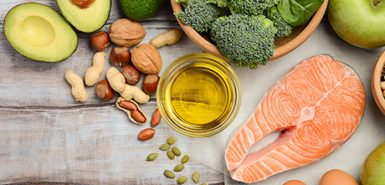
An antibiotic can slow the growth of bacteria that cause infection, or it can destroy them altogether.
Antibiotics are produced naturally by one microorganism that selectively inhibits the growth of another. They’re also produced synthetically by pharmaceutical companies.
As medicines, antibiotics can only be prescribed by your health care provider. They may be taken by mouth, in a shot or through an IV. There are many types of antibiotics, and each has different ways of attacking bacteria.
Antibiotics are also used prophylactically as a way to prevent infections from occurring in the first place. This is why patients with a certain type of heart murmur may be required to take antibiotics before going to the dentist. Patients are also often asked to take antibiotics prior to or right after surgery.
The research and development of antibiotics have provided lifesaving treatments around the world.
Eureka! Penicillin’s discovery
The road to discovery includes mold, scientists, doctors, research, patients and patience.
What can we do to conserve antibiotics?
- Use antibiotics only as directed by your physician.
- In the food world, consider purchasing only animal products that are given antibiotics minimally, or for therapeutic uses only.
- Take Spectrum Health classes that help you take care of you.
- Visit FoodDay.org to learn about more about events that supports sustainable foods.
In 1928, Alexander Fleming returned from a two-week vacation and observed the contents of a lab experiment container—a petri dish—that he’d left unattended during his absence. A petri dish is a small container about the size and shape of a hockey puck; it provides an environment for things to grow. Things like bacteria.
Fleming’s petri dish contained a type of bacteria called staphylococcus. It should have gone into an incubator, but it didn’t. And somehow, a mold spore of penicillium notatum landed in it and grew in the dish.
Fleming observed how the mold had a ring around it that was void of bacteria. This meant that this particular penicillium mold was doing something to fight off the bacteria.
From this lab discovery arose the use of penicillin.
The antibiotic was used for topical or surface infections initially. Then, teaming scientific talent with tenacity, in 1945 Fleming, Howard Florey and Ernst Chain won the Nobel Prize for further penicillin research that allowed for the treatment of internal bacterial infections.
Animalbiotics: Animals and antibiotic use
Today’s research has become increasingly important given the development of “super bugs,” or bacteria that have developed resistance to antibiotics. Super bugs are more difficult to treat.
The medical industry strives to use antibiotics appropriately in humans to reduce the risk of antibiotic resistance, which happens when antibiotics become ineffective in combating bacterial infections in or on the body.
But antibiotics are also used in our pets and farm animals.
Agricultural animals may be given antibiotics because they live in close quarters, or because the farmer is trying to affect the animals’ growth rates.
When humans consume antibiotic-exposed animal products, they run the risk of consuming resistant organisms.
 /a>
/a>
 /a>
/a>
 /a>
/a>